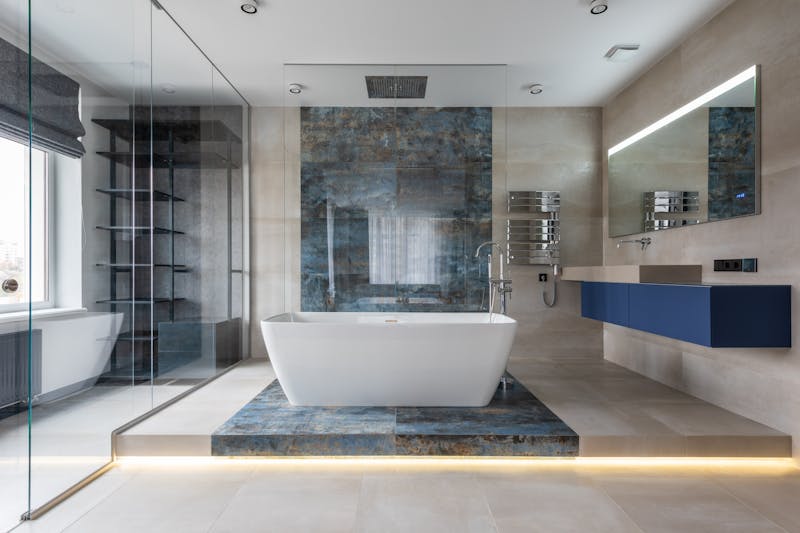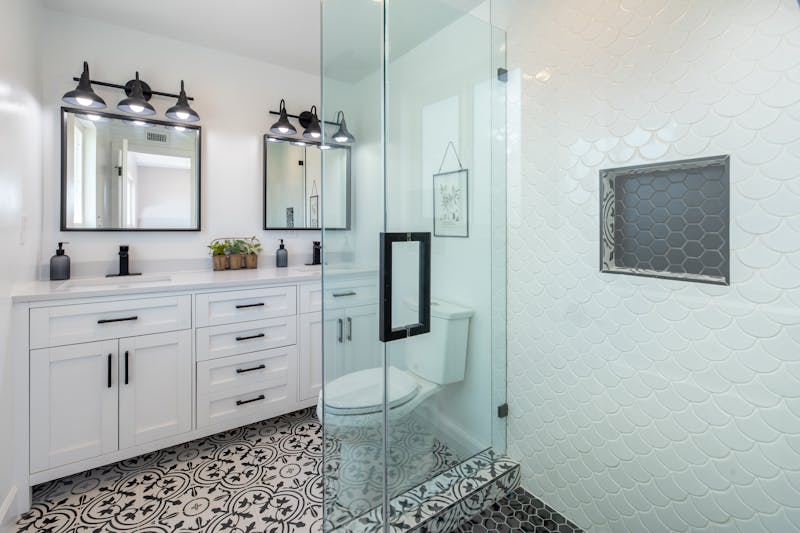
How To Pick Between a Bathtub or Shower
Bathtub or shower?
This one choice impacts not only the look of your bathroom but also its function, comfort, and long-term value. Before making a decision, you’ll need to weigh your lifestyle, family needs, and the design of your space.
With so many options available, understanding what to consider will help you choose the right feature for your home.
Think About Your Personality and Lifestyle
The first factor to consider is how you actually use your bathroom.
A tub might be non-negotiable if you enjoy soaking in a warm bath after a long day. Freestanding tubs, soaking, or jetted tubs create a relaxing spa-like experience in your home. On the other hand, if you value speed and efficiency, a shower would likely be your preferred choice.
You should also think about your family situation. Families with young children often prefer bathtubs because they make cleaning the kids easier. In contrast, households with older adults may prioritize showers, especially walk-in versions that are safer and easier to access.
Make the Space Work for You
Sometimes you can’t meet all of your personal preferences because of your space, so it’s important to know what you’re working with. Your bathroom’s layout and size will significantly affect your decision.
Tubs require more floor space, while showers, especially corner or walk-in designs, are often better for smaller bathrooms. If you have a spacious master bath, you may even be able to fit both, creating a versatile setup that appeals to different needs.
Don’t forget to consider how the new tub or shower will affect movement in the room. A cramped layout can make even a beautiful bathroom feel uncomfortable. By planning carefully, you ensure that your upgrade improves both aesthetics and functionality.
Accessibility and Safety Features
Accessibility is another important factor when choosing between a tub and a shower.
Walk-in showers are often safer for anyone with mobility issues since they eliminate the need to step over a tub wall. To make showers even more user-friendly, you can add safety features like grab bars, slip-resistant flooring, and built-in seating.
Tubs, while luxurious, can present challenges for accessibility. However, walk-in tub options combine the comfort of soaking with safer entry and exit. If accessibility is a concern, you should weigh the benefits of these alternatives before deciding. Consider Long-Term Value.
The number of tubs and showers you have can affect the value of your home.
Bathrooms are key selling points; buyers often look closely at whether a home has a tub or a shower. Usually, having at least one bathtub is a plus, especially for families with children. If your home has multiple bathrooms, a mix of tubs and showers can increase its appeal to a broader range of buyers.
Modern walk-in showers with glass doors and sleek finishes are also highly desirable, particularly for master bathrooms. They offer a clean, contemporary look that makes a strong impression. The best option depends on whether you’re remodeling for comfort or with resale value in mind.
Style and Design Preferences
Your personal style should guide your decision as much as functionality.
A clawfoot tub creates a classic, timeless aesthetic, while a frameless glass shower feels sleek and modern. The materials you choose, such as tile, acrylic, or stone, influence your final look and feel.
Consider how the tub or shower will fit into the rest of your design. Do you want it to be a statement piece, like a freestanding tub in the center of the room? Or do you want it to blend seamlessly into the overall layout, like a tiled walk-in shower? The right choice will reflect your taste and vision for the space.
Maintenance and Durability
Another factor is how much time you want to spend maintaining your bathroom.
Showers with glass doors may require frequent cleaning to prevent water spots and soap scum, while tubs can accumulate buildup if not regularly scrubbed. The materials you select will also influence durability and maintenance needs.
Acrylic and fiberglass options are easier to clean and more affordable, while stone and tile surfaces require more upkeep but provide a luxurious look. By considering the balance between maintenance and design, you’ll avoid surprises later on.
Budget and Financing Options
Finally, you need to think about your budget. Tubs and showers vary widely in price depending on the style and materials. A simple acrylic tub will cost less than a custom tile walk-in shower with multiple showerheads. But that doesn’t mean you have to sacrifice your vision. Financing options make it easier to choose what you want without stretching your budget too thin.
You can break down the investment into manageable payments if your contractor offers 0% financing for 12 to 24 months or extended plans. This way, you can prioritize features that improve comfort, safety, and long-term value without delaying your project.
So, Which Do You Choose?
Choosing between a tub and a shower is about creating a bathroom that fits your lifestyle, your family’s needs, and your home’s long-term value. By evaluating your space, considering accessibility, and balancing style with maintenance, you can make an informed decision that you’ll enjoy for years.
Whether you dream of a soaking tub or a sleek walk-in shower, the right choice enhances your daily routine while improving your home’s appeal.
When you’re ready to start, work with a remodeling professional who can guide you through design options and help you bring your vision to life.
Let's Get Started
Upgrade Your Space Now
Quality renovations tailored to your style.
Trusted local experts ready to help.
Popular Posts

What To Expect When You Hire a Company To Remodel Your House
Richard Jimenez

7 Features That Make Your Kitchen a Dream
Richard Jimenez

How To Pick Between a Bathtub or Shower
Richard Jimenez

Don’t Get Stuck Choosing Stucco For Your Home
Richard Jimenez

7 Upgrades To Make Your Dream Bathroom
Richard Jimenez
